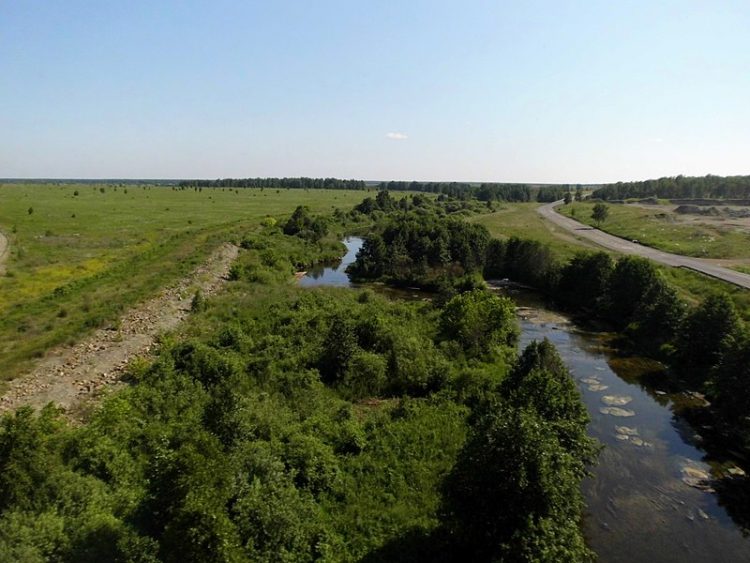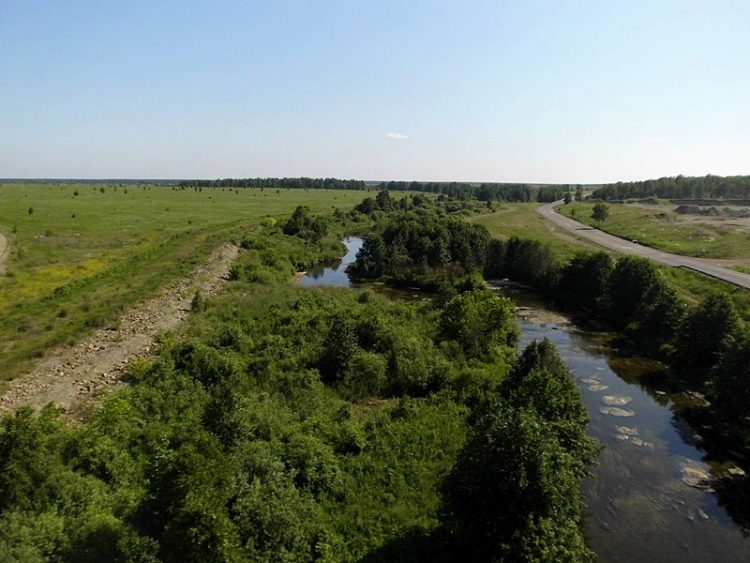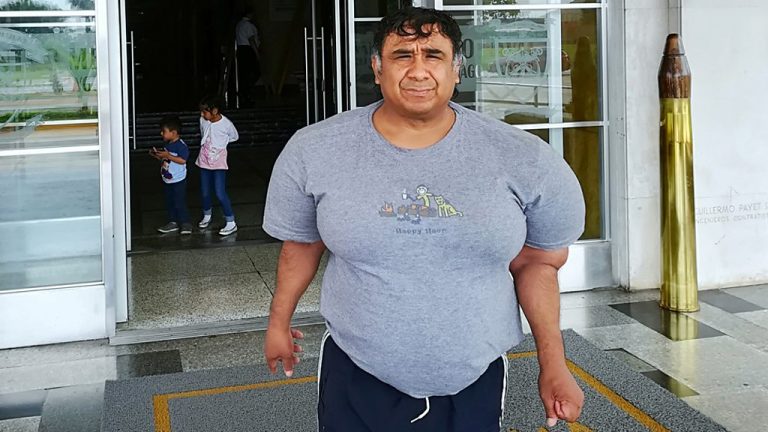The Techa River flowing down the eastern flank of the Ural Mountains in Russia is considered the world’s most radioactive river, as a result of having been used as a dumping ground for nearly 80 million tons of radioactive wastewater over several years.
At first glance, the Techa River looks pristine, inviting even, and you’d never guess that it once was – and by some accounts, still is – the dumping ground of a secret nuclear compound responsible for exposing tens of thousands of people to as much as 20 times the radiation suffered by the victims of the Chernobyl nuclear disaster. 23 or the 24 rural communities that the Techa flowed by have been evacuated in the last 13 years, but not before thousands of people developed cancers, or suffered chromosomal abnormalities and birth defects. Even today, when authorities claim the levels of radiation in the Techa River are “acceptable”, Geiger counters still beep ominously when placed near the waterline…

Photo: Ural-66/Wikimedia Commons
“Sometimes they would put up signs warning us not to swim in the river, but they never said why,” pensioner Gilani Dambaev told the Associated Press in a 2016 interview. “After work, we would go swimming in the river. The kids would too.”
The reason Russian authorities didn’t mention the nature of the danger posed by the waters of the Techs River is that for many decades the general public didn’t even know about the Mayak nuclear complex located upstream. It didn’t show up on maps and people were forbidden to come anywhere near it. Even today, the area is off-limits, so it’s impossible to say for sure what goes on there.
“My opinion is they’re still dumping radioactive waste,” Vladimir Slivyak, an activist for the Russian environmentalist group EcoDefense, said. “But proving that is impossible unless Mayak says: ‘Yes, we’re dumping radioactive waste.'”
What cannot be denied is that between 1949 to 1956 Mayak dumped an estimated 76 million cubic meters of wastewater in the Techa River, knowing full well that it was used as the main water source by two dozen villages with a combined population of around 28,000. Evacuations of these communities only began in 2008, decades after Russia admitted to the disasters of the past, and by that point, it was already too late for many.
A 2007 study by Greenpeace citing hospital records and door-to-door surveys in the Muslyumovo region traversed by the Techa showed cancer rates 3.6 times higher than the Russian national average and a birth-defect rate 25 times higher than average. A long-term study carried out by Russian and American scientists from the Radiation Research Society also found that out of 17,435 residents born before 1956, 1,933 had cancer and that the vast majority of the population had high deposits of strontium-90 in their bones.
Up until the late1980s, Russian authorities denied the very existence of Mayak as well as the several nuclear disasters it had been a part of. In the end, it had no choice but to admit the damage, reporting that an estimated 450,000 people had been affected by two major nuclear incidents at Mayak. However, they offered no data on immediate deaths, exposure rate or developed illness in the affected population.
Representatives of Russia’s Romatom and Nuclear Safety Institute describe the current radiation level of the Techa River as “incomparably less to what it used to be” and “completely compliant with the standards of the Russian Federation”. And while it’s certainly better than what it used to be decades ago, according to the AP, the water still has more background radiation than usual. Measurements near the waterline ranged from 8.5 to 9.8 microsieverts — 80 to 100 times the level of naturally occurring background radiation.
Russian authorities seem to be acknowledging the danger posed by the Techa to anyone clueless about its nuclear past, as Nuclear Engineering magazine last year reported that hundreds of warning signs were to be installed along its banks.













